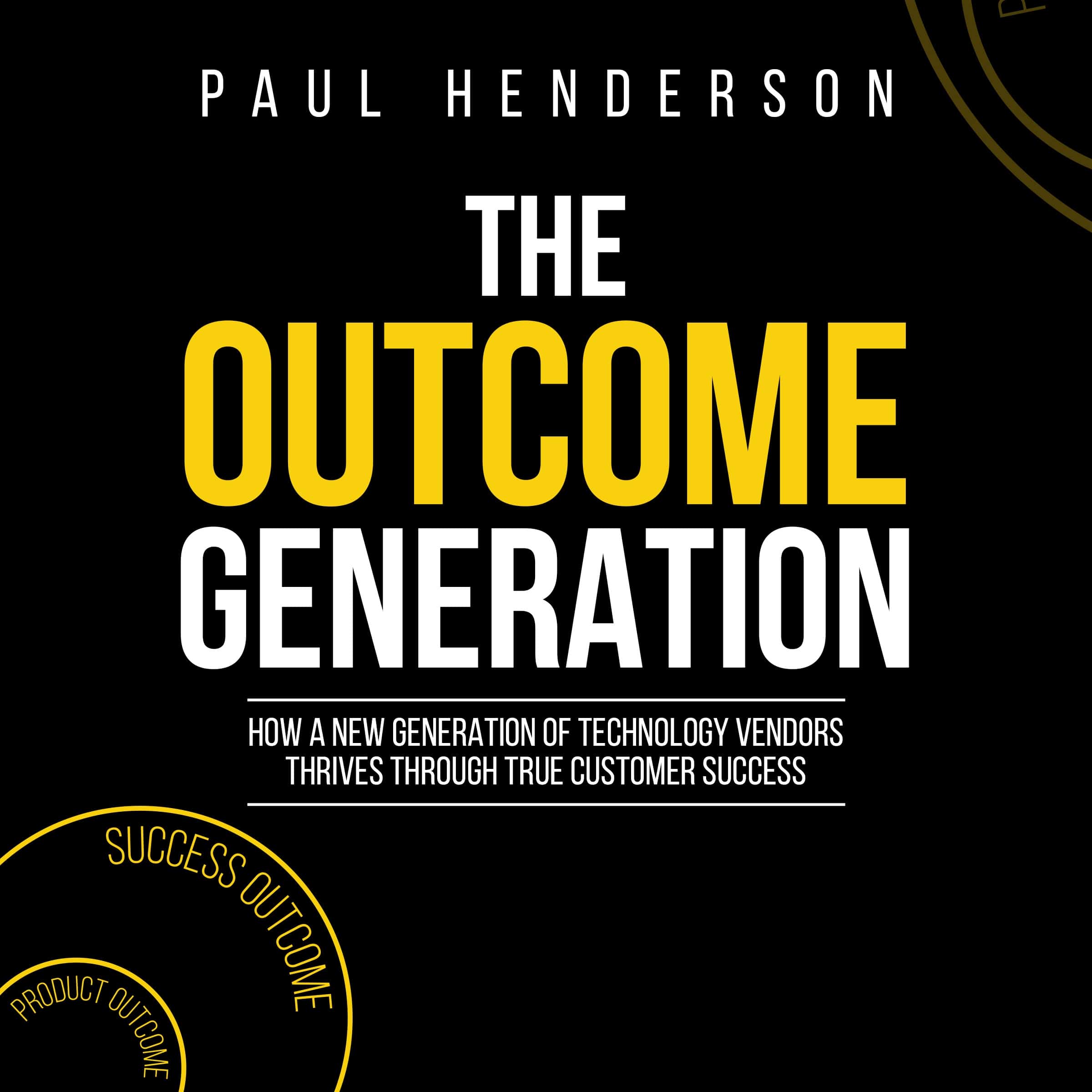How Outcomes Lead to Better Customer Engagement

Customers of outcome-focused technology vendors buy the vendor’s products and services. But not because the vendor sold to them. The sale happens in a different way.
Traditional Customer Engagement
There’s a traditional relationship between customers and vendors. The vendor has products and services. They try to sell those products and services to their customers. Customers are wary the vendor only cares about selling their products. This makes customers defensive and they adopt a buyer beware attitude. It often feels adversarial to both sides.
Traditional vendors use a solution selling approach. They identify customer problems. They then attempt to convince the customer that buying their products or services will solve those problems. But vendor contracts often state the vendor does not attest to their products’ fit for purpose. The responsibility for determining fit for purpose lies with the customer. And that’s why customers have a buyer-beware approach.
The solution-selling approach to customer engagement has been around for 30 years. It’s lasted despite the semi-adversarial relationship it establishes. And that’s because it’s the best model the technology industry could come up with. Until recently.
A Shift to Outcomes
A growing number of companies such as SAP, ServiceNow, Mulesoft, New Relic and more are shifting their focus to outcome-based engagement. They’re recognising their products are a means to an end – the achievement of a bigger business outcome. To achieve the bigger business outcome, the customer needs the vendor’s products to work. But that’s not enough to ensure achievement of the outcome.
The focus on outcomes can create a different attitude. The customer and vendor, together, work out how to achieve the business outcome. And they jointly focus on achieving that outcome.
That, in turn, creates a different engagement cycle. Let’s look at an example for vendors with complex products and high-touch customers.
Periodic Business Review (PBR)
Periodic business reviews begin the joint engagement. They involve senior executives from the customer and senior people from the vendor. The PBR will start with a strategic update from both customer and vendor. The update from the vendor should never mention product unless there’s been a major acquisition or a strategic change in direction.
The customer and vendor will have previously agreed the bigger business outcome (called a Success Outcome) they will focus on. To illustrate Success Outcomes, if the vendor provides ERP software the Success Outcome may be operational effectiveness. If the vendor is a marketing automation vendor, the Success Outcome may be the ongoing value of the pipeline. If the vendor is a CRM vendor, the Success Outcome may be the effectiveness of the sales process. Different vendors serve different Success Outcomes.
Both parties understand the purpose of the PBR. They’re going to discuss how to improve the Success Outcome.
The PBR should analyse metrics on the Success Outcome. It’s rare the customer will decide that everything is okay. They’ll want ongoing improvement in the outcome over time.
Attention can then turn to where the biggest opportunities for improvement lie. Both customer and vendor make suggestions. The customer executives will then decide which potential improvements warrant further investigation. They will delegate the investigation to managers in their own business to work with the vendor.
Business Case
The assigned managers and the vendor work together. They first conduct a high-level analysis. How much would it cost to achieve the improvement? How much benefit would that generate? How difficult would it be to do? They then jointly report back to the customer executives on whether a high-level business case exists.
If a high-level business case exists, the customer executives decide whether to approve a detailed analysis. They may not, given the many other challenges they face. If the executives approve the detailed analysis, the assigned managers and the vendor conduct a thorough investigation.
The investigation is not about whether the vendor’s products will solve a set of problems. The investigation evaluates a project to drive an improvement in the Success Outcome. Products may form part of the project, but there’s much more to consider.
The final report should contain all the information required for the project to gain approval. It would include detailed costing, likely improvements in the Success Outcome, an implementation plan, financial analysis such as ROI required by the customer, a description of how the business would change et cetera.
The report then goes through the customer’s internal approval process.
Joint Project
For approved projects, a joint project team forms. They first confirm the business outcome the project must deliver. The Success Outcome is a broad outcome. The project will have a narrower outcome which will lead to improvement in the Success Outcome. The detailed business case analysis would contain this project objective. But all parties need to reconfirm the project objective.
Project review meetings and steering committee meetings now include a new agenda item – is the project on track to deliver the business objective? The purpose of the project is not just to get software live. It is to deliver improvement in the Success Outcome.
That means the project isn’t finished on go-live. It remains open until metrics establish whether the improvement in the Success Outcome has occurred. Only then can the teams close the project.
Joint Presentation of Results
The teams jointly present to customer executives on the results achieved from the project. If they didn’t achieve the project objective, they discuss lessons learnt and corrective action.
Continuous Improvement
The cycle repeats on a regular basis. Most customers seek ongoing improvement in the Success Outcome.
Sell Projects Not Products
Throughout this entire engagement cycle, the vendor hasn’t tried to try to sell products. They have jointly identified projects to drive improvement in the Success Outcome. As part of analysing a project, the joint teams identify new products or services needed. And, of course, the customer still needs to ensure the products will play their part in the project. But the primary focus of customer and vendor is not whether a product will solve a problem. The focus is on whether the project will drive the necessary improvement in the Success Outcome.
More Profitable Engagement
It’s the change of focus from selling products to improving outcomes which allows the engagement model to shift. The model moves from the traditional, semi-adversarial relationship to a joint engagement approach. That builds trust. It drives better outcomes for the customer.
And that ultimately drives better results for the vendor.
This article is based on the book; The Outcome Generation: How a New Generation of Technology Vendors Thrives through True Customer Success
Paul Henderson is an author, speaker and consultant on outcome-based customer success for technology vendors. His last role was leading the Asia Pacific region of an enterprise software company. He saw the potential that could come from delivering real and measurable business success for customers. So, he initiated a customer success program based on customer outcomes. He and his colleagues developed, modified and proved the model over more than five years. He thespent one a half years researching and writing, culminating in the release of The Outcome Generation.
+61 1300-859791
pjh@outcomeleaders.com
facebook.com/outcomeleaders
linkedin.com/outcomeleaders
youtube.com/outcomeleaders
Receive the latest on Outcome-based Customer Success |
Send us a Message
Error: Contact form not found.



